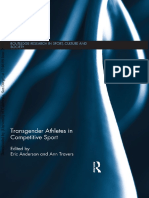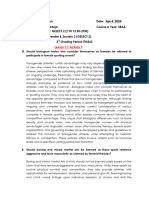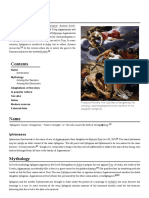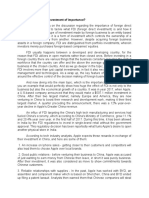0% found this document useful (0 votes)
6 views7 pagesWeek 8-Assignment
The document discusses the ongoing debate regarding the participation of transgender women in women's sports, highlighting the tension between inclusion and fairness. Supporters advocate for equality and inclusion, while opponents raise concerns about potential advantages stemming from male puberty. Possible solutions include creating separate categories for transgender athletes or implementing stricter regulations on hormone treatment to ensure fair competition.
Uploaded by
MeHaK MusTaFa MaHaRCopyright
© © All Rights Reserved
We take content rights seriously. If you suspect this is your content, claim it here.
Available Formats
Download as DOCX, PDF, TXT or read online on Scribd
0% found this document useful (0 votes)
6 views7 pagesWeek 8-Assignment
The document discusses the ongoing debate regarding the participation of transgender women in women's sports, highlighting the tension between inclusion and fairness. Supporters advocate for equality and inclusion, while opponents raise concerns about potential advantages stemming from male puberty. Possible solutions include creating separate categories for transgender athletes or implementing stricter regulations on hormone treatment to ensure fair competition.
Uploaded by
MeHaK MusTaFa MaHaRCopyright
© © All Rights Reserved
We take content rights seriously. If you suspect this is your content, claim it here.
Available Formats
Download as DOCX, PDF, TXT or read online on Scribd
/ 7





























































































